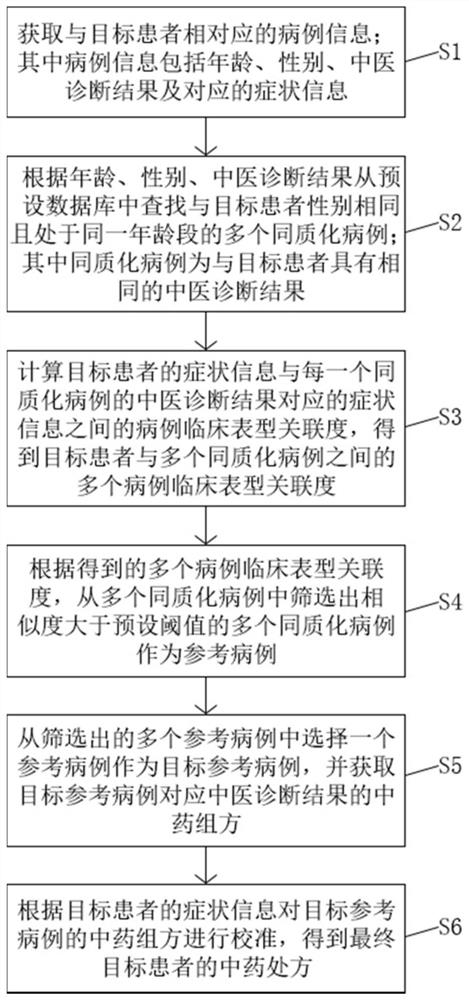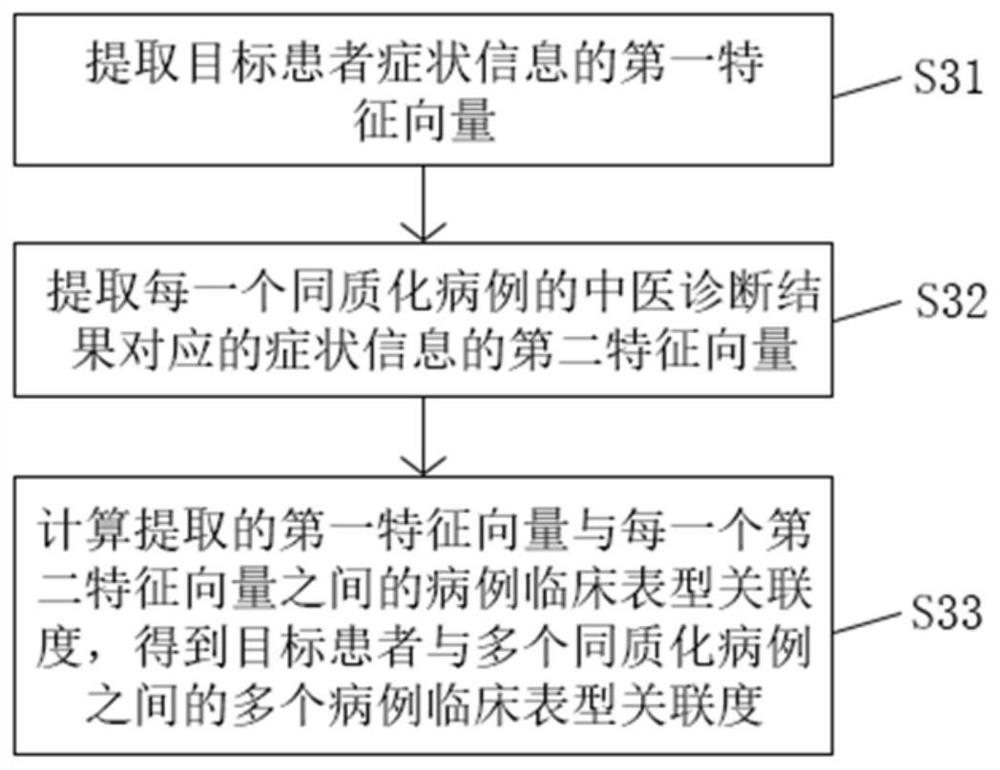Traditional Chinese medicine formula recommendation method and system based on case clinical phenotype association degree
A recommendation method and correlation technology, applied in the direction of drugs or prescriptions, neural learning methods, biological neural network models, etc., can solve problems such as unformed technical solutions, and improve treatment efficiency and suitability, rapid generation, and applicability high effect
- Summary
- Abstract
- Description
- Claims
- Application Information
AI Technical Summary
Problems solved by technology
Method used
Image
Examples
Embodiment 1
[0074] This embodiment provides a method for recommending traditional Chinese medicine prescriptions based on the correlation degree of clinical phenotypes of cases, such as figure 1 shown, including steps:
[0075] S1. Obtain the case information corresponding to the target patient; the case information includes age, gender, TCM diagnosis results and corresponding symptom information;
[0076] S2. According to the age, gender, and TCM diagnosis results, search for multiple homogenized cases with the same sex and the same age group as the target patient from the preset database; where the homogenized cases have the same TCM diagnosis results as the target patient;
[0077] S3. Calculate the case clinical phenotype correlation between the symptom information of the target patient and the symptom information corresponding to the TCM diagnosis result of each homogeneous case, and obtain the clinical phenotype of multiple cases between the target patient and multiple homogeneous c...
Embodiment 2
[0143] A method for recommending prescriptions of traditional Chinese medicine based on the correlation degree of clinical phenotype provided in this example differs from Example 1 in that:
[0144] In this embodiment, the clinical phenotype correlation degree of the case can be obtained by cosine similarity, specifically including:
[0145] extracting the first feature vector of the symptom information of the target patient;
[0146] Extracting the second feature vector of the symptom information of each homogeneous case;
[0147] Calculate the cosine similarity between the first eigenvector of the symptom information of the target patient and the second eigenvector of each of the homogeneous case symptom information to obtain multiple cosine similarities, thereby obtaining the The clinical phenotype correlation of the cases. Wherein, the calculation method of the cosine similarity belongs to the prior art, therefore, the description will not be repeated.
Embodiment 3
[0149] A method for recommending prescriptions of traditional Chinese medicine based on the correlation degree of clinical phenotype provided in this example differs from Example 1 in that:
[0150] In this embodiment, the clinical phenotype correlation degree of the case can be obtained by the similarity based on the Euclidean distance, specifically including:
[0151] extracting the first feature vector of the symptom information of the target patient;
[0152] Extracting the second feature vector of the symptom information of each homogeneous case;
[0153] calculating the Euclidean distance between the first eigenvector of the target patient and the second eigenvector of each of the homogeneous cases;
[0154] Calculate the Euclidean distance-based similarity between the target patient's symptom information and each homogenized case symptom information according to each Euclidean distance, and obtain multiple Euclidean distance-based similarities.
[0155] In this embodi...
PUM
 Login to View More
Login to View More Abstract
Description
Claims
Application Information
 Login to View More
Login to View More - R&D
- Intellectual Property
- Life Sciences
- Materials
- Tech Scout
- Unparalleled Data Quality
- Higher Quality Content
- 60% Fewer Hallucinations
Browse by: Latest US Patents, China's latest patents, Technical Efficacy Thesaurus, Application Domain, Technology Topic, Popular Technical Reports.
© 2025 PatSnap. All rights reserved.Legal|Privacy policy|Modern Slavery Act Transparency Statement|Sitemap|About US| Contact US: help@patsnap.com



